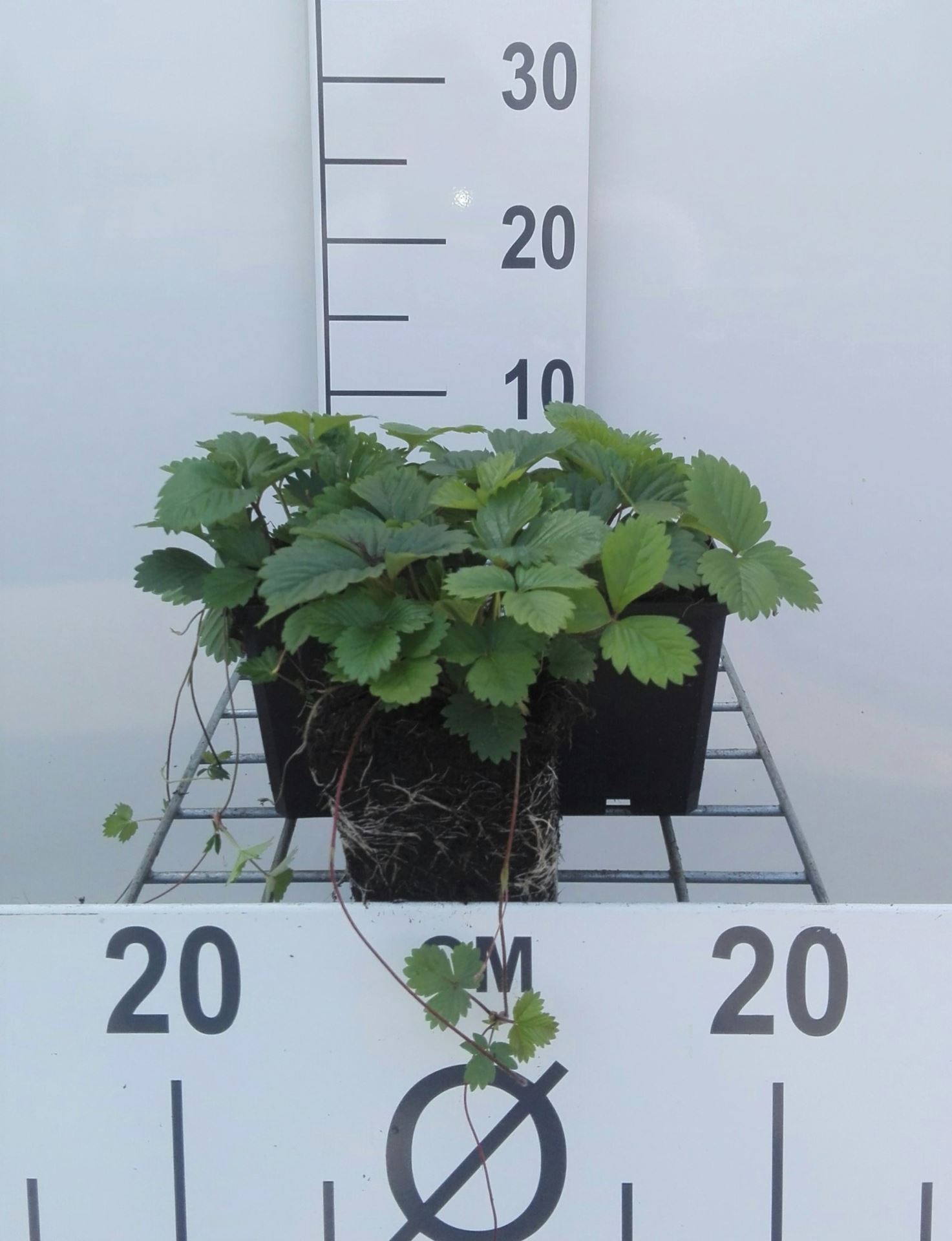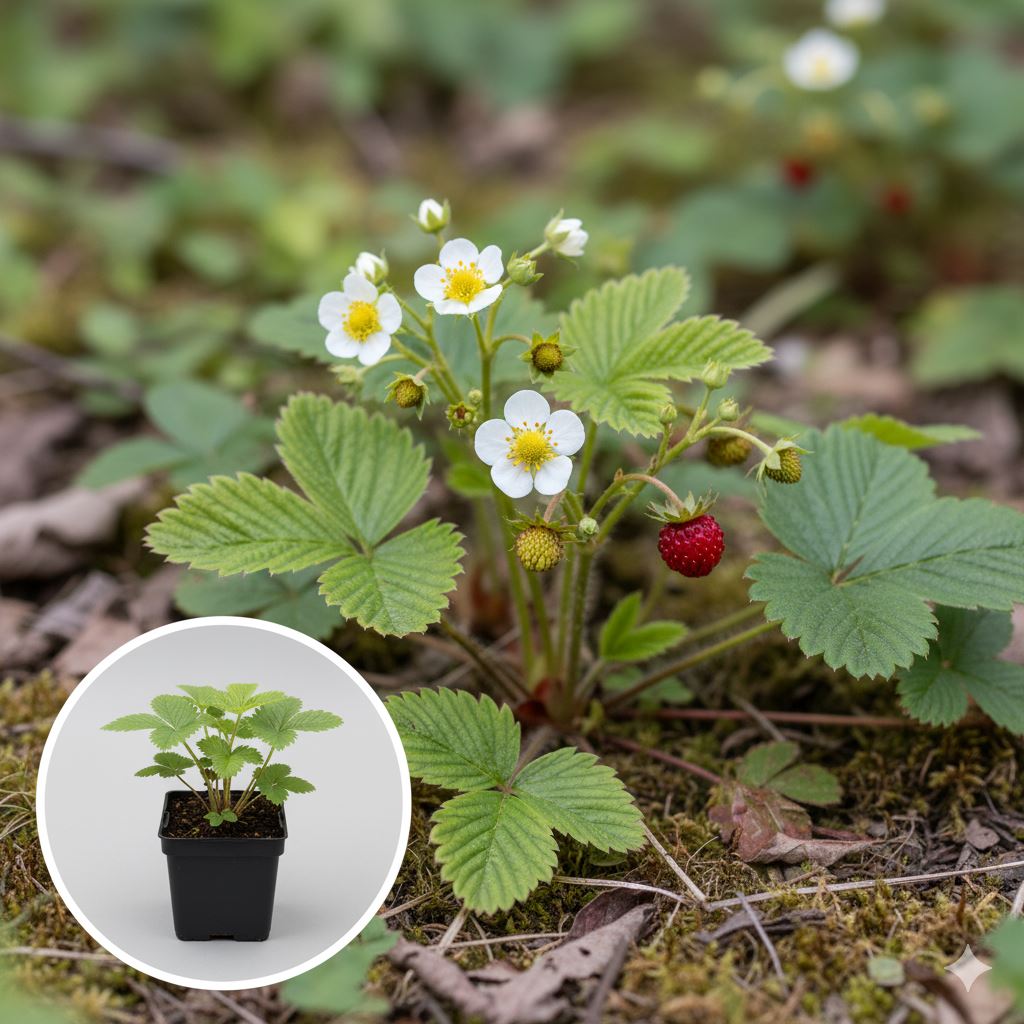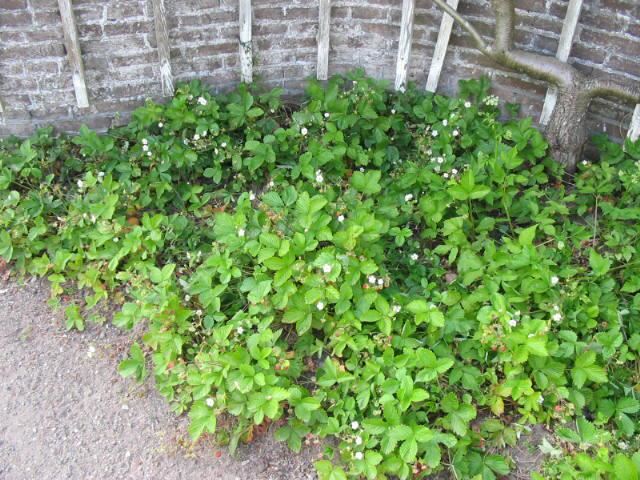Fragaria vesca - Woodland Strawberry - pot 9x9 cm
Dutch name: woodland strawberry, ornamental strawberry
Planten
Art. nr. 201812711
Product information "Fragaria vesca - Woodland Strawberry - pot 9x9 cm"
- Size pot: 9x9 cm
- Small fruit
- Eatable
- Flowering color: white
- Winter hardy
- Insect attractant
Product specifications
| Application / use plant: | Tree level/tree wreath |
|---|---|
| Average number per m²: | 8 |
| Bloom Month: | May, June, July, August, September |
| Bloom color: | White |
| Branches / bark: | Unknown - n/a |
| Dutch plant name: | Bosaardbei |
| English plant name: | Wild Strawberry |
| Flower color - details: | White |
| French plant name: | Fraisier sauvage |
| Frost hardiness - details: | Very good (-29 till -23°c), usda zone 5 |
| Frost resistance: | Extrême winter hardiness |
| Fruit: | Berry-shaped, Red |
| Fruit - details: | Red, edible |
| Full grown plant height: | 10 cm |
| German plant name: | Walderdbeere |
| Growth habit : | Ground cover |
| Humidity/Soil: | Moist soil |
| Latin plant family: | Rosaceae |
| Leaf / Foliage: | Green |
| Leaf / foliage - details: | Deciduous, green |
| Location: | Halfshadow, Full sun |
| Location - details: | Sun till half-shade |
| Minimum growing height (in cm): | 10 |
| Plant characteristic: | Ground cover, Indigenous, Fruit-bearing |
| Plant family: | Rose family |
| Planting distance: | 7-9 pieces per m² (33-38 cm apart) |
| Pruning period: | March |
| Winter foliage: | Losing leaf |
| maximal growth height (in cm): | 10 |
| type of crop: | Perennial plant |
| type of soil: | Normal soil, Peaty soil (acidic) |
| type of soil / ground - details: | Any type of soil |
| Package dimensions: | 10L x 11W x 24.25H cm |
Pictures of this plant
Reviews
Login














